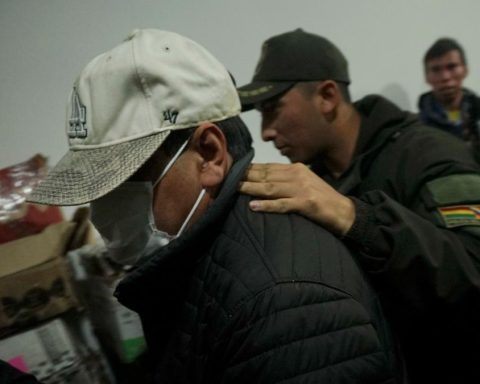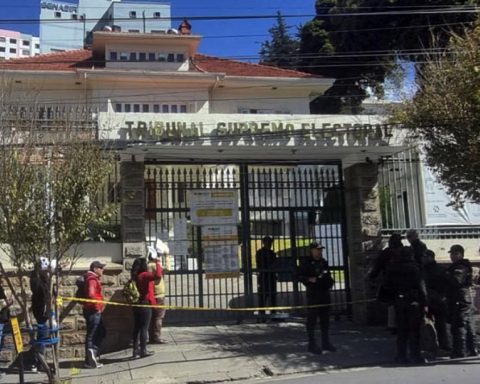August 23, 2024, 4:00 AM
August 23, 2024, 4:00 AM
Fernando Anibal Garcia Enriquez
Some time ago, the virtual newspaper “Brújula Digital” published an article entitled “A pioneer in the East”, in which Mr. Ronald MacLean Abaroa is mentioned as its author.
This text, referring to the founding of the La Esperanza Sugar Mill in the department of Santa Cruz, does not specify the historical truth of the facts, which is why I must therefore make a necessary clarification.
One of those inaccuracies maintains that the sugar industry in Santa Cruz originated with the founding of the La Esperanza Sugar Mill in 1939. However, the available historical documentation proves that this activity is 463 years old, starting in 1561 with the founding of the city by Captain Ñuflo de Chaves; since then, the processing of sugar cane was carried out on the basis of procedures and techniques that allowed obtaining new knowledge, such as techniques for planting sugar cane, building wooden mills, systems for cooking sugar cane juice in cauldrons, methods of crystallization and recovery of honey in clay molds, engineering operations that gave rise to a native technology that stood out successfully in the Rio de la Plata regions; For example, according to the Paraguayan historian Eugenio Friedmann, in 1568 Juan de Garay, who collaborated with Ñuflo de Chaves in the founding of Santa Cruz de la Sierra, went to Asunción, taking a master sugar maker from Santa Cruz to promote this industry in Paraguay, confirming with this event the first export of technology from Santa Cruz in 1568.
Another mistake detected in the aforementioned article places Luis Iturralde, an architect by occupation, as the founder of the La Esperanza Sugar Mill. Namely, the main manager and ideologist was the sugar producer Mr. Waldo Bravo Justiniano, who in 1939 decided to found a sugar mill with modern technology on his property called “La Esperanza”; to carry out this project, he turned to other sugar producers, obtaining the support of the then president Germán Busch, however, this effort could not materialize due to the unexpected death of the president, for which reason they had to admit new partners in the project, including in this instance Iturralde.
Although Luis Iturralde’s participation served to channel bank loans, assuming the management of the sugar mill after Waldo Bravo left the company, these resources were not wisely used, resulting in its definitive closure in 1964. Several years later, Iturralde made his defense, pointing to another sugar mill as the culprit of that bankruptcy, an accusation that was picked up by Mr. Erwin Gasser, responding immediately through an open letter dated December 4, 1986, (El Mundo newspaper) in which he details point by point, the poor management of said company, such as the purchase of oversized machinery, unnecessary facilities, and the purchase of an airplane and a house in La Paz, among others.
However, the inaccuracies of that article are maximized by stating that Iturralde brought “civilization and culture” to this region. I must clarify at this point that, by 1939, La Esperanza was already a sugar establishment with an annual production of 900 blocks of sugar, equivalent to almost 1000 quintals of this product, and 5000 jugs of molasses, equivalent to almost 2500 liters destined for fermentation for the production of alcohol, a practice that influenced the east, since the 16th century in the configuration of the identity, tradition and culture of Santa Cruz de la Sierra, creating towns, creating society, habits, a social imaginary, and even the typical way of dressing of the people of Santa Cruz, in addition to a novel system of job creation not seen in other latitudes of the continent; It is enough to remember Doña Catalina Polanco, owner of a sugar mill in 1620, who developed sugar whitening techniques to make it more competitive in the Imperial Villa of Potosí and, since there were no African slaves in Santa Cruz de la Sierra serving this industry and, as recorded in ABNB archives, she created a system of paid labor based on the abilities of each one.
On the other hand, the creation of the San Aurelio and La Bélgica sugar mills, already in the 20th century, were private ventures, whose visible successes today are consecrated from the vision and leadership of their founders, not having been influenced at all, observing the aforementioned article, by the presence of Iturralde during the time that he participated, according to his own words, in that adventure. Although the architect Iturralde is recognized in the east for his twenty-year dedication to the tasks required by the painful process for the consolidation of an industrial project, the poor results obtained at the end of the road weigh more, due to the poor management of the sugar mill that he headed.
It is convenient, necessary, and prudent to clarify the truth of the facts, for the health of national history.


















